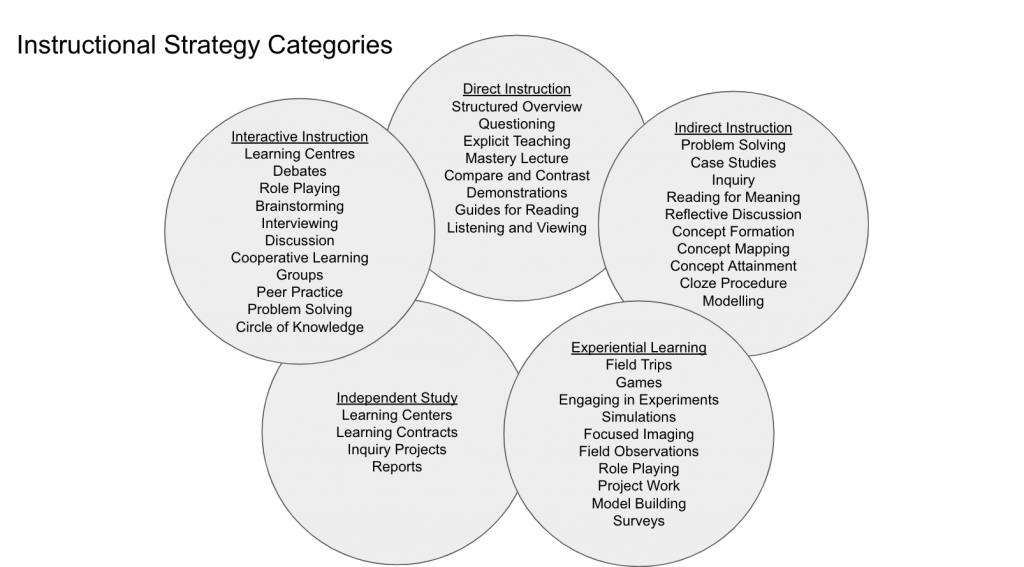Provided below is a list of some Instructional Strategies that I have found to be beneficial and effective when creating lesson plans for any grade or subject. Much of my understanding of these approaches were expanded through this article on Powerful Instructional Practices created by the Saskatchewan Ministry of Education. In this article it states that “students must see their life experience both reflected and honoured in the work they are asked to do at school. Planning for instruction is not an either-or proposition; rather, all students benefit from learning through a variety of approaches, strategies, and resources that allow students to authentically interact with the multiplicity of realities present within each classroom.” (pg. vii). To me, this represents that as a teacher it is my responsibility to be sure that all students feel represented in the classroom, and one of the best ways to do this is to ensure that all students are learning in a way that suits them individually. There is no one way to use these instructional strategies, nor are they completely separate from each other. Using a combination of these approaches can ensure that all students’ needs are being met.
Direct Instruction: This is one of the most commonly used instructional strategies. This refers to teacher-directed learning where teachers use explicit teaching techniques to teach specific skills. For example, this might look like a teacher lecturing at the front of the classroom.
Indirect Instruction: This approach is more student centered. Students observe, investigate, and draw inferences in this instructional model. The teacher’s role is more of a facilitator and supporter.
Experiential Instruction: This process uses experiences to learn through the reflection of doing. This approach is generally more hands-on, and is easy to incorporate into other forms of learning like Place-Based and Inquiry Driven Learning.
Cooperative Learning: This strategy centers around small student grouping. This allows students to work together to maximize their own and each other’s learning. One thing to keep in mind about this learning is that grouping should be intentional and thoughtful, this strategy should focus on collaboration and reduce isolated effort and competition.
There are some more instructional strategies highlighted below in an image taken from Audrey Aamodt’s ECS 303 course content.

